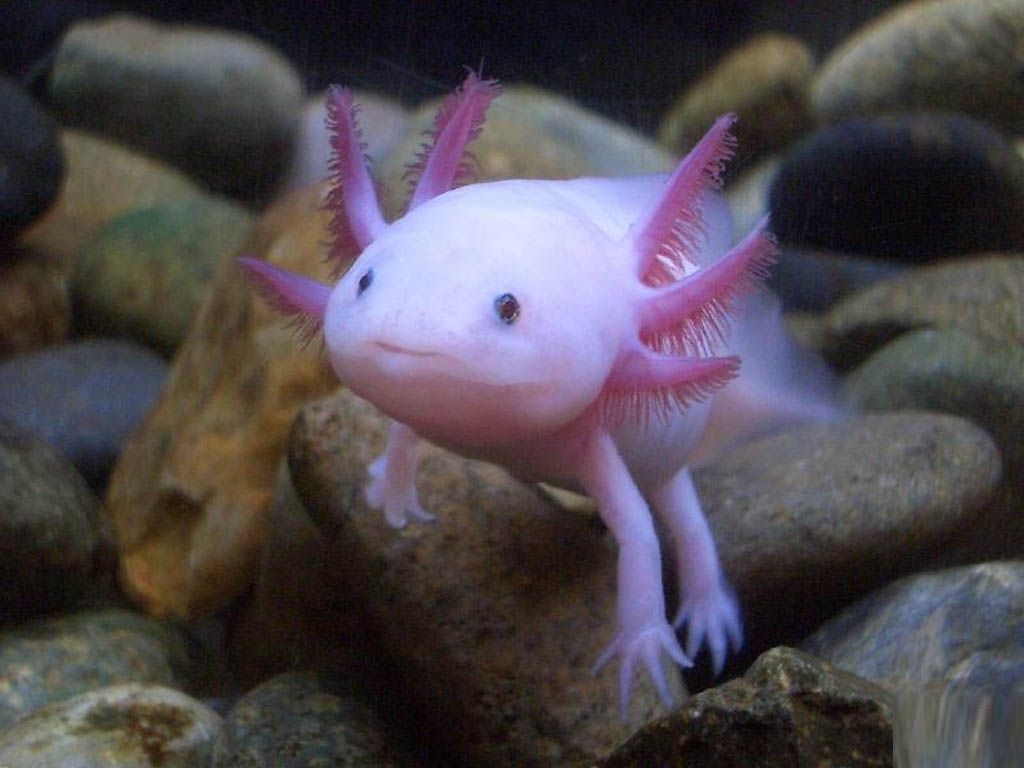Weird Animals That You Should Totally Adopt
October 3, 2017
Even nature can make mistakes. As everyone knows, sometimes mistakes can turn into happy accidents. On the other hand, they can be absolute nightmares.
Here’s a list of twelve strange animals that are just so weird that you can’t help but wonder what went wrong:
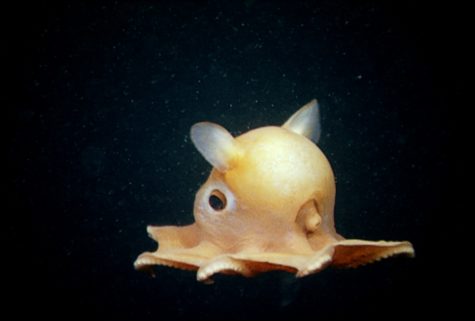
Dumbo octopus – The Dumbo octopus is the deepest living octopus, with ear-shaped fins resembling Dumbo the elephant. There are several Dumbo octopi belonging to the umbrella octopus group. They can swallow food whole. As few predators exist in the depths that these animals live in, their primary predators are just diving fishes and marine mammals, such as dolphins and tunas.

Red-lipped batfish – Believe it or not, this is not a crab; I didn’t even know that until I looked it up. This fish generally resides in the deep waters near the Galapagos Islands. Generally, the red-lipped batfish eats mainly small fish, mollusks, and crustaceans. Never growing more than 40 centimeters, the fish are quite small and difficult to detect. These fish can move on its pectoral and pelvic fins to resemble walking, as they can extend to touch the sea floor. This can be useful as the fish are just as bad as I am at swimming.
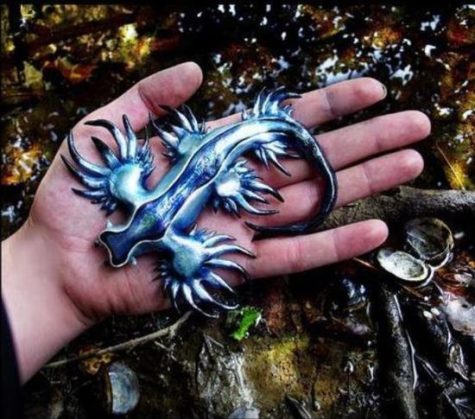
Glaucus atlanticus – The Glaucus atlanticus is basically a tiny blue sea slug, but it is pretty darn cute. This sea slug uses camouflage to avoid predators, the blue side blending in with the water and the silver side resembling the silver sea floor. While this sea creature is, in fact, adoptable, humans must be very cautious as the sting is quite painful and potentially dangerous. The Glaucus atlanticus is generally no larger than three centimeters, and it has jagged teeth. As they have been sighted all over the planet, there is no definite habitat for these creatures. If you’re in the mood for a slug pet, consider the Glaucus atlanticus.
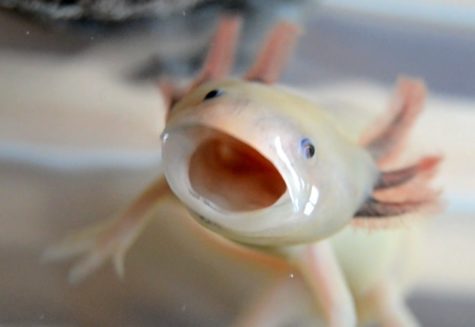
Axolotl – The axolotl is probably the cutest slimy animal you’ve ever seen. They are a type of salamander that lives exclusively in a lake near Mexico City. Though they rarely get this large, they can grow up to a foot. Right now, they are a critically endangered species, as the Xochimilco Lake, where they reside, is currently being contaminated and drained. However, they are bred in captivity. The axolotl takes regeneration to the next level; they can regrow limbs, spines, and even brains. With their facial features resembling a constant smile, it is hard not to fall in love with the axolotl.
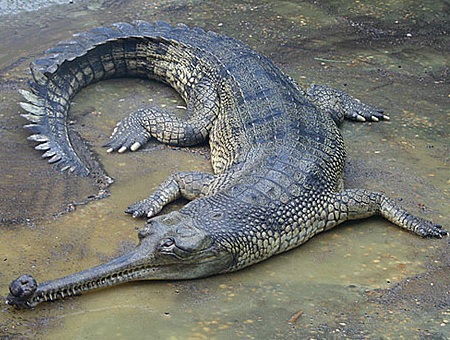
Gharial – The gharial is the Rudolph of crocodiles, found in Northern India. It spendsmost of its life in the water, as it has very short legs that make walking difficult. The gharial can grow up to six meters in size, and have over 50 teeth. Its elongated snout proves very useful in catching fish. The gharial is a critically endangered species, with less than 250 currently living. It is one of three species native to India. While the use of the bulbous feature on the nose is unknown, scientists believe that it is used to attract mates as a sign of sexual maturity, as it is developed during the crocodile version of puberty. This is one animal that I would not want to meet in a fight.
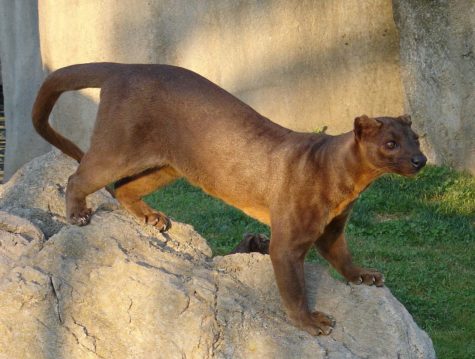
Fossa – You might recognize the fossa from the Madagascar movie as the primary predator of all of the little animals. Indeed, this cat-like animal is native to Madagascar. The fossa is closely related to the mongoose, though you would probably have no idea based on appearances alone. Over 50% of their diet consists of lemurs, which are also native to the island. Many people that live on the land fear the fossa, and view them as a negative omen. While they are not endangered at the moment, they are considered vulnerable.
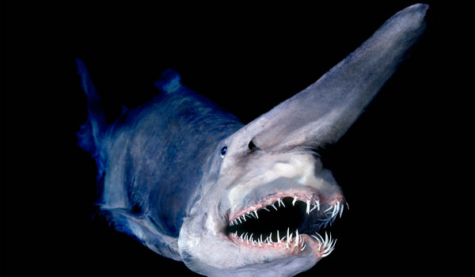
Goblin shark – This is the living embodiment of a nightmare. The goblin shark, true to its name, is the only living member of the Mitsukurinidae family of sharks, a family over 125 million years old. One of the smaller sharks, they only grow up to four meters long. One of its distinct features is its long and flat snout, resembling a sword. The shark’s jaws can extend out almost to the length of the snout in order to eat. Though the younger sharks swim in more shallow areas, the adults tend to be found in waters deeper than 100 meters. Unlike many of the other animals listed, the goblin shark luckily has a stable population.
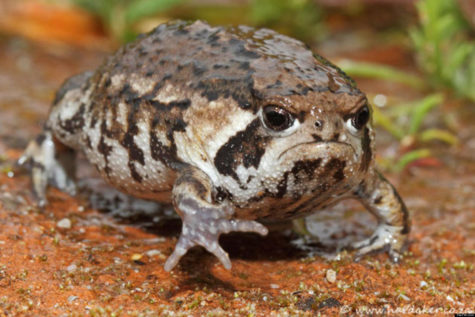
Desert rain frog – The desert rain frog is a very small frog who lives in the shores between beaches and sand dunes. When threatened, they let out a terrifying roar similar to that of a dog toy. Due to constant human interference, they are listed as a vulnerable species. The desert rain frog feeds mostly on small insects. They live exclusively in the white sand dunes, which are unfortunately being disrupted my humans. The only way to restore the population is for habitat recovery.
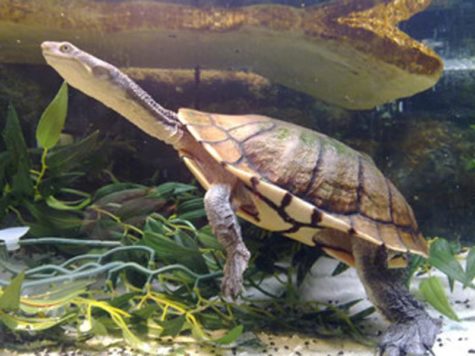
Eastern long-necked turtle – The eastern long-necked turtle is, in fact, a turtle, not a giraffe. They live in south-eastern Australia. Their necks are very thin and long, reaching up to 60% of the shell length. When threatened, the turtle will emit a very strong-smelling fluid to scare off predators. Their shells will only grow to around 25 cm, making them fairly small in size. They live mostly off of fish and frogs.
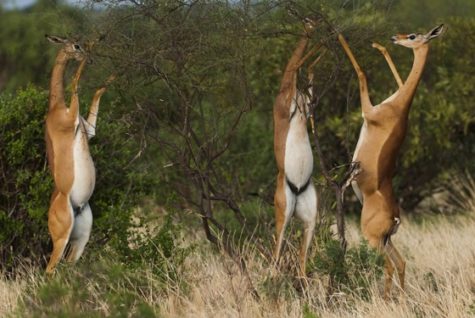
Gerenuk – The gerenuk is an antelope, also not a giraffe; it just happens to have a long neck as well. They are no taller than four feet long, and the only member of the Litocranius genus. It is often referred to as the giraffe gazelle, but it is still not a giraffe. They are active in the day, but often rest in the shade in the heat; the females tend to spend more time eating than the males. The herds are generally very small and only one sex, but the young stay with the females. The gerenuk can reach higher branches than other antelopes by standing on their hind legs. I relate to the animals in the fact that they don’t fight or travel in order to save energy for more eating. The gerenuks are currently at a stable population, and will hopefully remain that way.

Shoebill – The shoebill, or the shoebill stork, is a rather massive bird resembling the stork. The exact classification of the bird remains unclear, but people tend to associate them most with pelicans, due to their large beaks. The shoebill is native to parts of eastern Africa, living in mostly tropical lands. The birds grow to be almost two meters in height, and their wingspan tends to be even greater. They have the third largestbeak of all currently existing, beat only by the pelican and the stork. In order to neatly catch prey, the shoebills use the sharp edges of their beaks. These birds tend to avoid moving far from their habitats, only flying several hundred meters from their habitats. They are also one of the slowest flying birds, topped only by – you guessed it – the stork. The shoebill does not prefer to move much when hunting; they remain vigilant until food moves close enough for them to make a swift grabbing motion that is not always very effective. As with many of these animals, they are considered a vulnerable species due to human-caused habitat destruction. They make noises ranging from a moo to a squeal, depending on their situation.

Aye-Aye – Believe it or not, this weird washed up rat-looking creature is closely related to monkeys and humans, existing exclusively in Madagascar; maybe they should catch up with the fossa and grab a drink. This nocturnal animal, also known as the long-fingered lemur, spends all of its life in trees, spending all of the days in leaf nests. While we may use our middle fingers for specific rude gestures, the aye-aye puts it to work in getting food. One way is by tapping on bark of trees to listen for insects inside of the bark, later making a hole and scooping them right out. It’s also used to scrape out fruit, such as coconuts. The aye-aye is considered a bad omen, and used to be killed immediately; they are now protected by laws. Unfortunately, they are currently classified as an endangered species.











